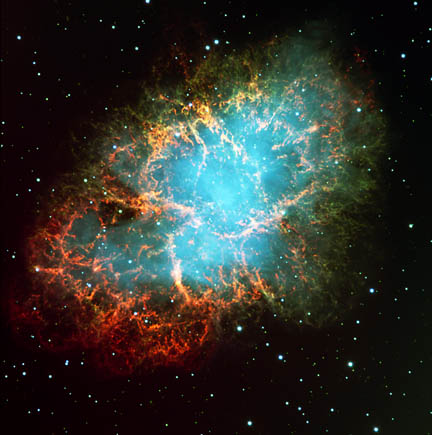The material blasted from a supernova eventually runs into interstellar gas and dust. Friction with this interstellar material slows the outward flow of stellar material. Since some regions have little interstellar matter while others are rich in gas and dust, the supernova remnants expand irregularly into space. Supernova remnants thus tend to be irregular. The Crab Nebula, a remnant of a supernova witnessed by Chinese astronomers in 1054AD, is thus oblong and organized into a series of arching filaments that represent gases heated by the collision between interstellar and supernova materials. The bluish haze represents radiation from electrons forced into highly energetic spirals by a spinning pulsar in the center of the remnant.
Of special importance to these web pages, the overall effect of a supernova is to clear an area of much of its interstellar gas and dust by pushing it away from the site of explosion. Pushing this material into a nearby molecular cloud could thereby trigger the formation of stars and planetary systems like our own.
|

